Abstract
1 The effect on arterial blood pressure of intravenous injections of naloxone (200 μg) was examined in cats anaesthetized with chloralose. Usually these injections have no effect on blood pressure unless morphine or opioid peptides have been injected, when they produce a pressor response with tachycardia.
2 It was found that these injections produced a pressor response with tachycardia after a combination of two or more of the following surgical procedures: (1) tying sinus nerves, (2) removing stellate ganglia, (3) cutting vagi, (4) evisceration.
3 The pressor responses obtained in these conditions are taken as evidence that such procedures induce the release of endogenous opioid peptides.
4 The pressor responses to naloxone were greatest when all four surgical procedures had been performed and were then due to adrenaline secretion, evoked centrally by a sympathetic discharge to the adrenals.
5 If either the stellate ganglia or the viscera were left intact, but the remaining three surgical procedures performed, then the pressor responses to naloxone were due to a sympathetic discharge to adrenals and to blood vessels.
6 In cats that had received a subcutaneous injection of morphine (2 mg/kg) the adrenals played a minor role in the pressor responses to naloxone, unless the four surgical procedures had been performed. Then the adrenals became entirely responsible for them.
7 The opioid peptides released after the surgical procedures may be enkephalins or the C-fragment of lipotropin (β-endorphin). The stimulus for their release may be interruption of afferent sensory pathways from viscera or the `stress' associated with the surgical procedures.
Full text
PDF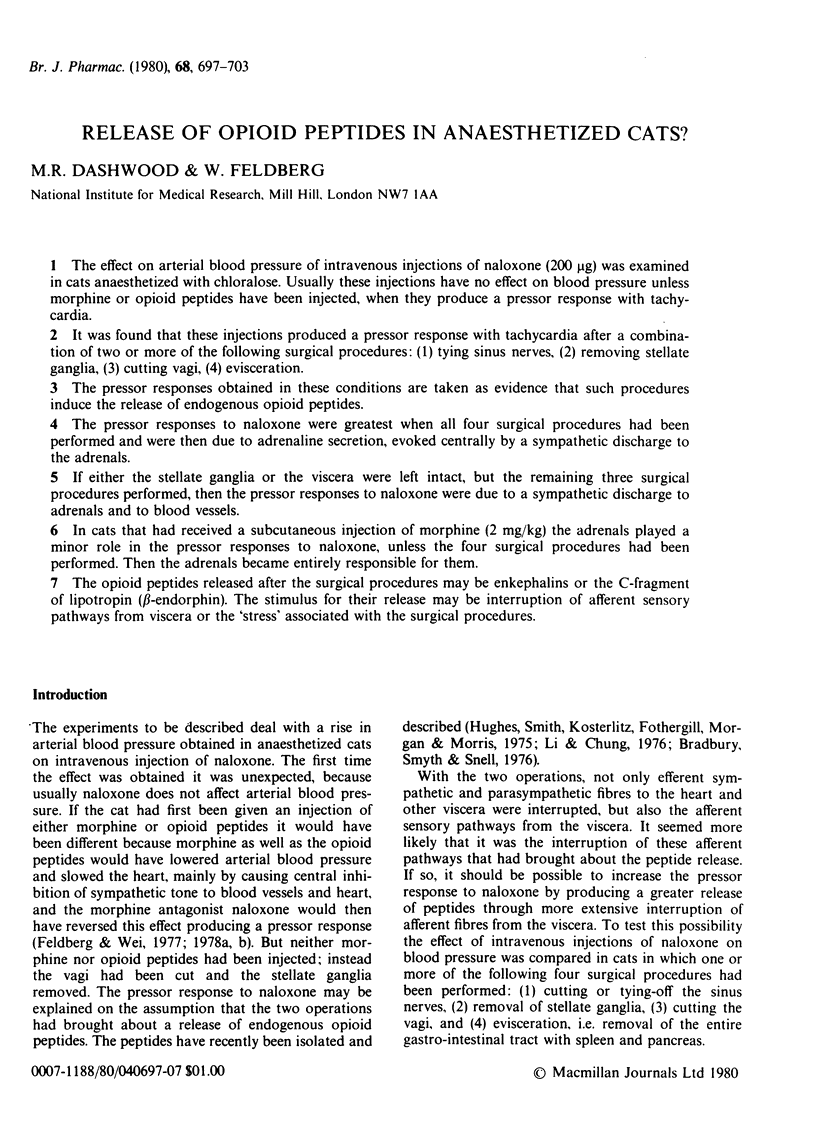
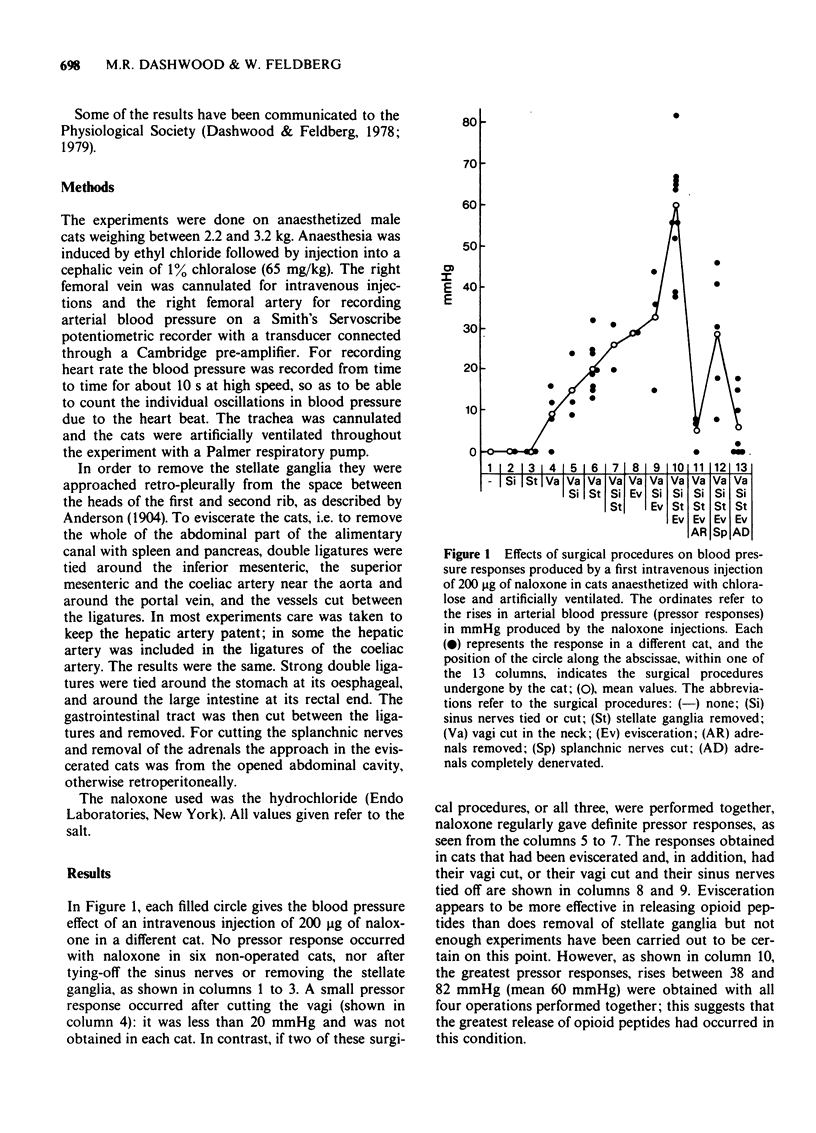
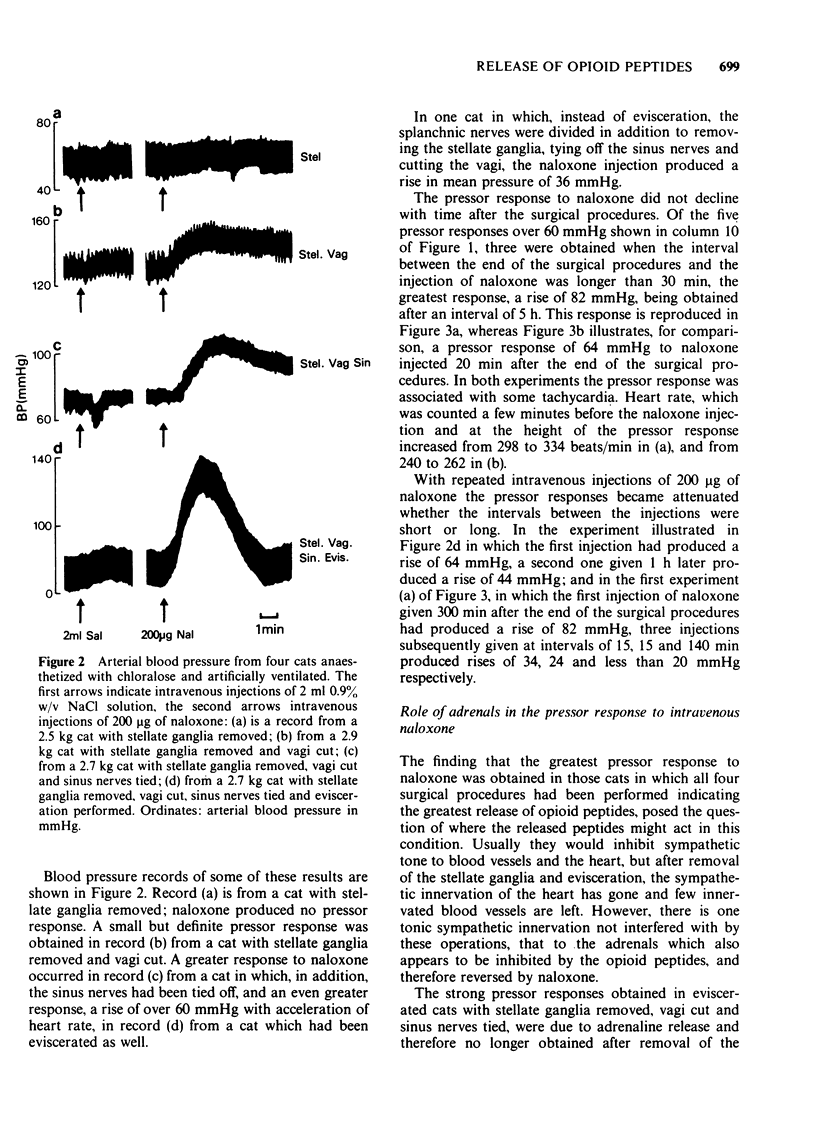
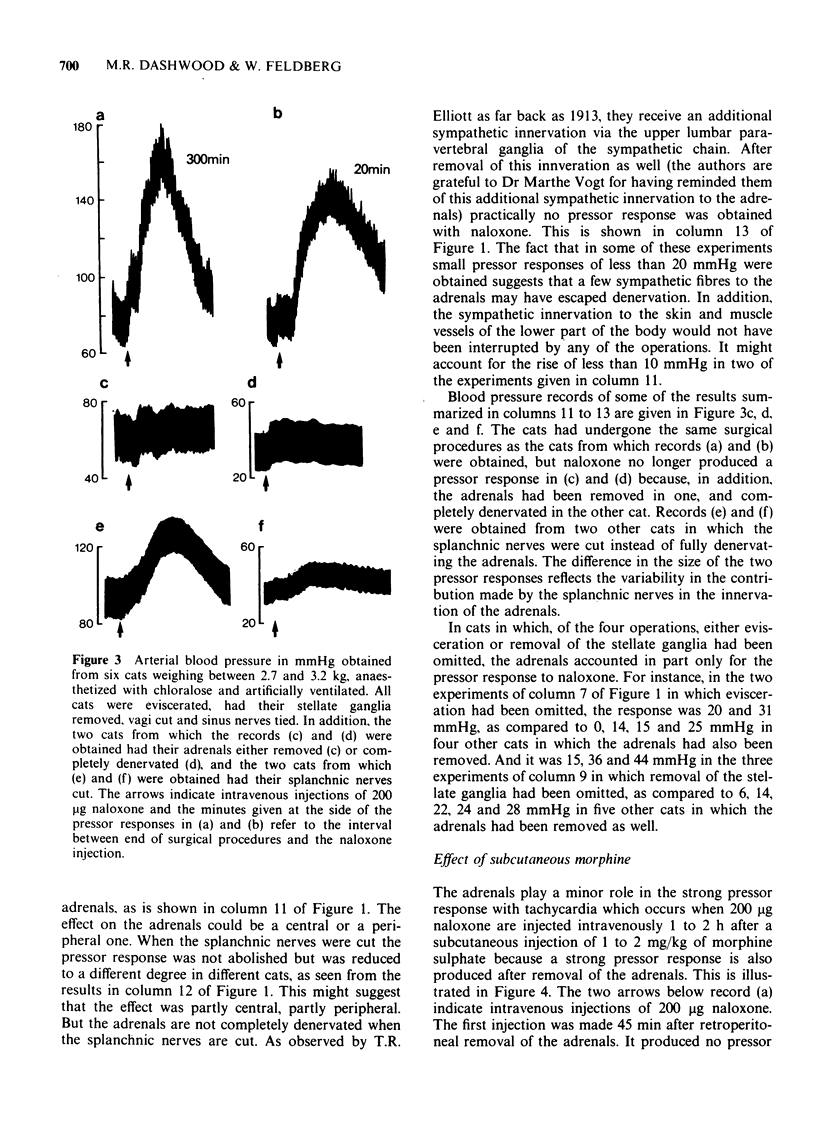
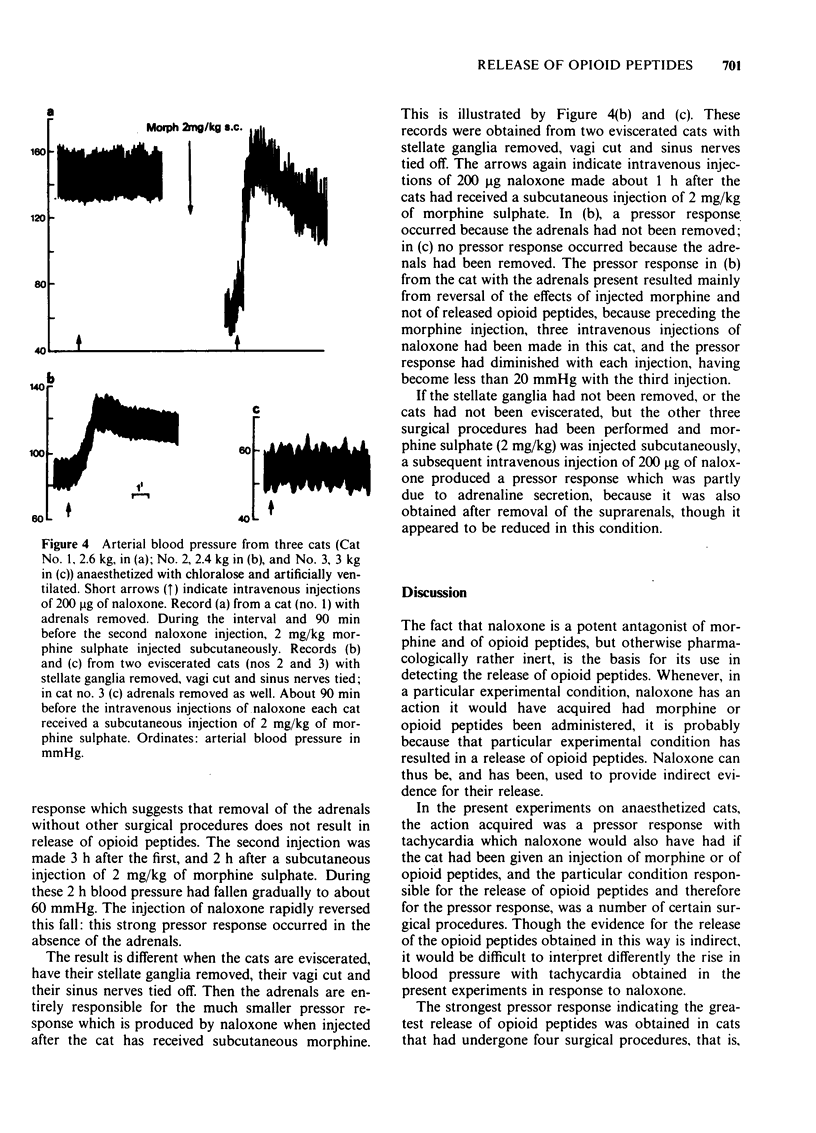
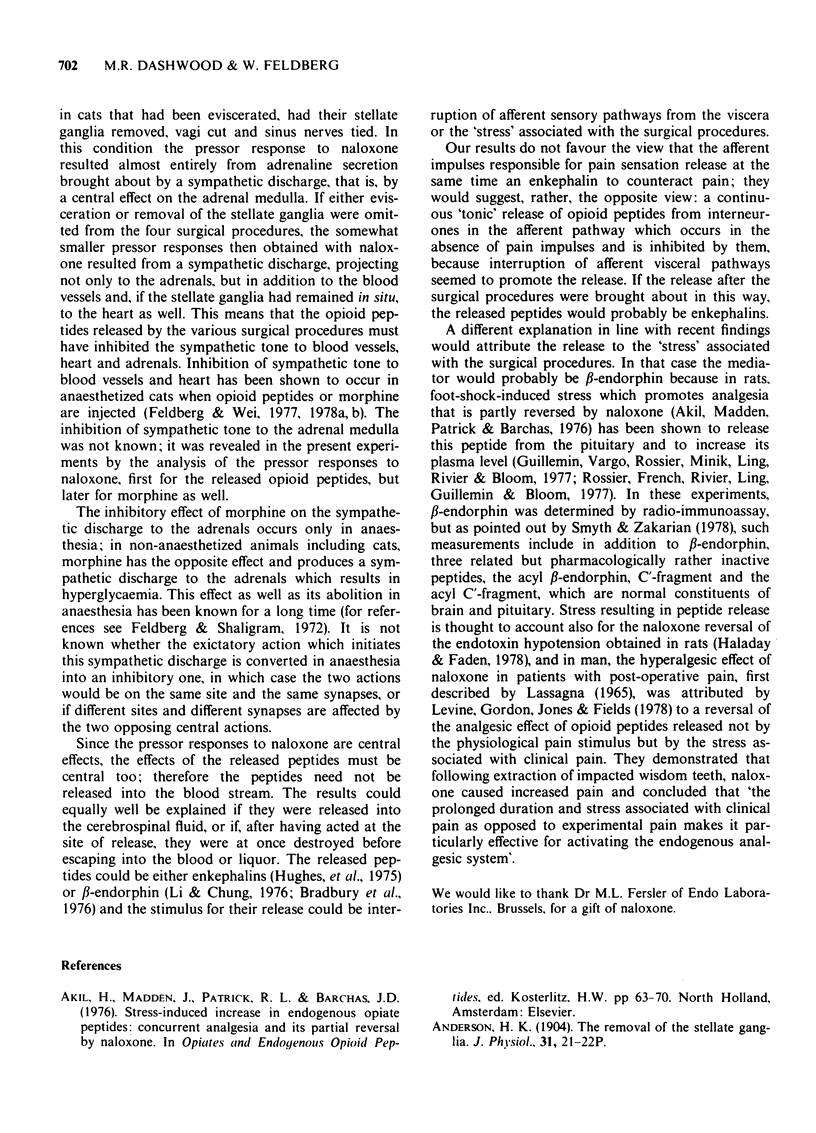
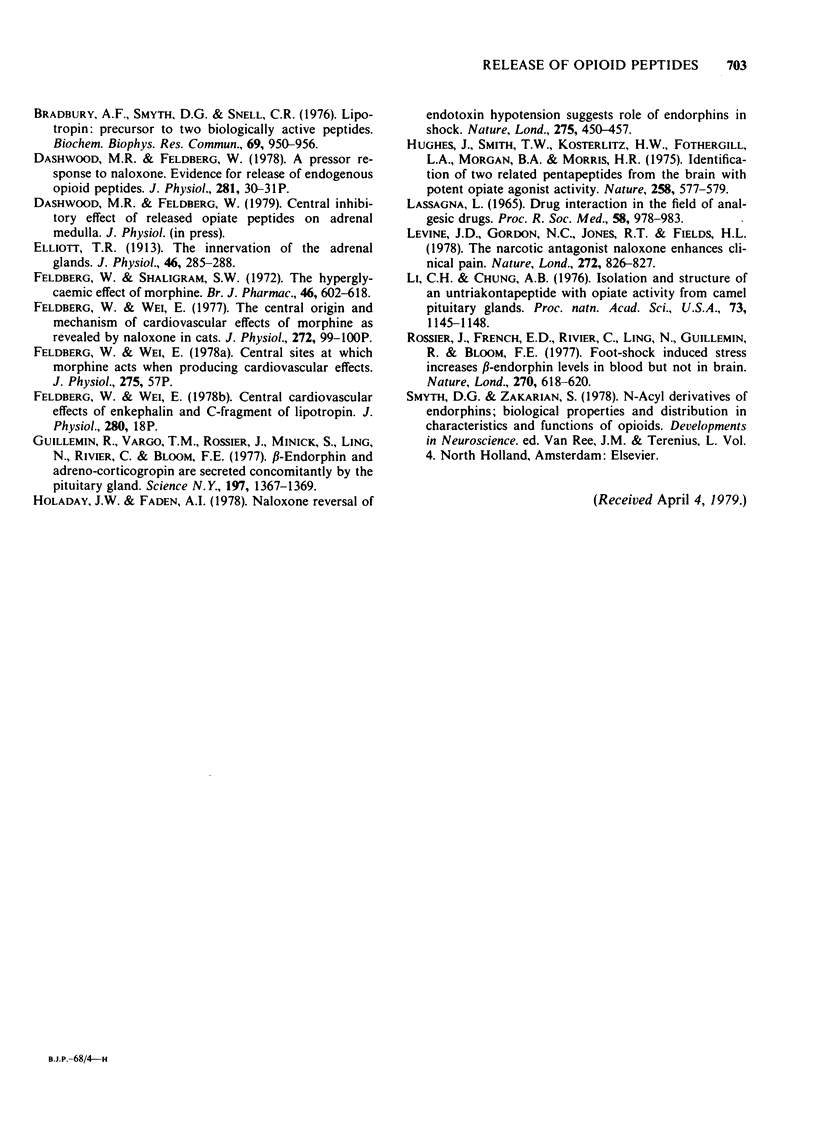
Selected References
These references are in PubMed. This may not be the complete list of references from this article.
- Bradbury A. F., Smyth D. G., Snell C. R. Lipotropin: precursor to two biologically active peptides. Biochem Biophys Res Commun. 1976 Apr 19;69(4):950–956. doi: 10.1016/0006-291x(76)90465-4. [DOI] [PubMed] [Google Scholar]
- Dashwood M. R., Feldberg W. A pressor response to naloxone. Evidence for release of endogenous opioid peptides [proceedings]. J Physiol. 1978 Aug;281:30P–31P. [PubMed] [Google Scholar]
- Elliott T. R. The innervation of the adrenal glands. J Physiol. 1913 Jun 19;46(3):285–290. doi: 10.1113/jphysiol.1913.sp001591. [DOI] [PMC free article] [PubMed] [Google Scholar]
- Feldberg W., Shaligram S. V. The hyperglycaemic effect of morphine. Br J Pharmacol. 1972 Dec;46(4):602–618. doi: 10.1111/j.1476-5381.1972.tb06887.x. [DOI] [PMC free article] [PubMed] [Google Scholar]
- Feldberg W., Wei E. Central cardiovascular effects of enkephalins and C-fragment of lipotropin [proceedings]. J Physiol. 1978 Jul;280:18P–18P. [PubMed] [Google Scholar]
- Feldberg W., Wei E. Central sites at which morphine acts when producing cardiovascular effects [proceedings]. J Physiol. 1978 Feb;275:57P–57P. [PubMed] [Google Scholar]
- Guillemin R., Vargo T., Rossier J., Minick S., Ling N., Rivier C., Vale W., Bloom F. beta-Endorphin and adrenocorticotropin are selected concomitantly by the pituitary gland. Science. 1977 Sep 30;197(4311):1367–1369. doi: 10.1126/science.197601. [DOI] [PubMed] [Google Scholar]
- Holaday J. W., Faden A. I. Naloxone reversal of endotoxin hypotension suggests role of endorphins in shock. Nature. 1978 Oct 5;275(5679):450–451. doi: 10.1038/275450a0. [DOI] [PubMed] [Google Scholar]
- Hughes J., Smith T. W., Kosterlitz H. W., Fothergill L. A., Morgan B. A., Morris H. R. Identification of two related pentapeptides from the brain with potent opiate agonist activity. Nature. 1975 Dec 18;258(5536):577–580. doi: 10.1038/258577a0. [DOI] [PubMed] [Google Scholar]
- Levine J. D., Gordon N. C., Jones R. T., Fields H. L. The narcotic antagonist naloxone enhances clinical pain. Nature. 1978 Apr 27;272(5656):826–827. doi: 10.1038/272826a0. [DOI] [PubMed] [Google Scholar]
- Li C. H., Chung D. Isolation and structure of an untriakontapeptide with opiate activity from camel pituitary glands. Proc Natl Acad Sci U S A. 1976 Apr;73(4):1145–1148. doi: 10.1073/pnas.73.4.1145. [DOI] [PMC free article] [PubMed] [Google Scholar]
- Rossier J., French E. D., Rivier C., Ling N., Guillemin R., Bloom F. E. Foot-shock induced stress increases beta-endorphin levels in blood but not brain. Nature. 1977 Dec 15;270(5638):618–620. doi: 10.1038/270618a0. [DOI] [PubMed] [Google Scholar]


